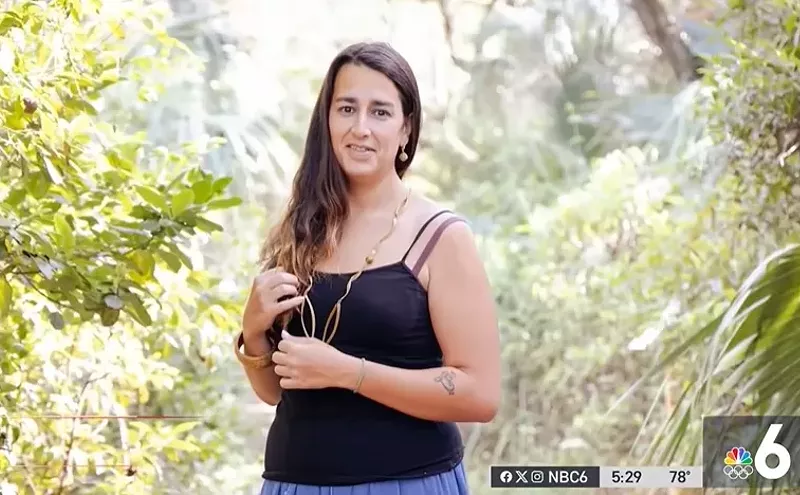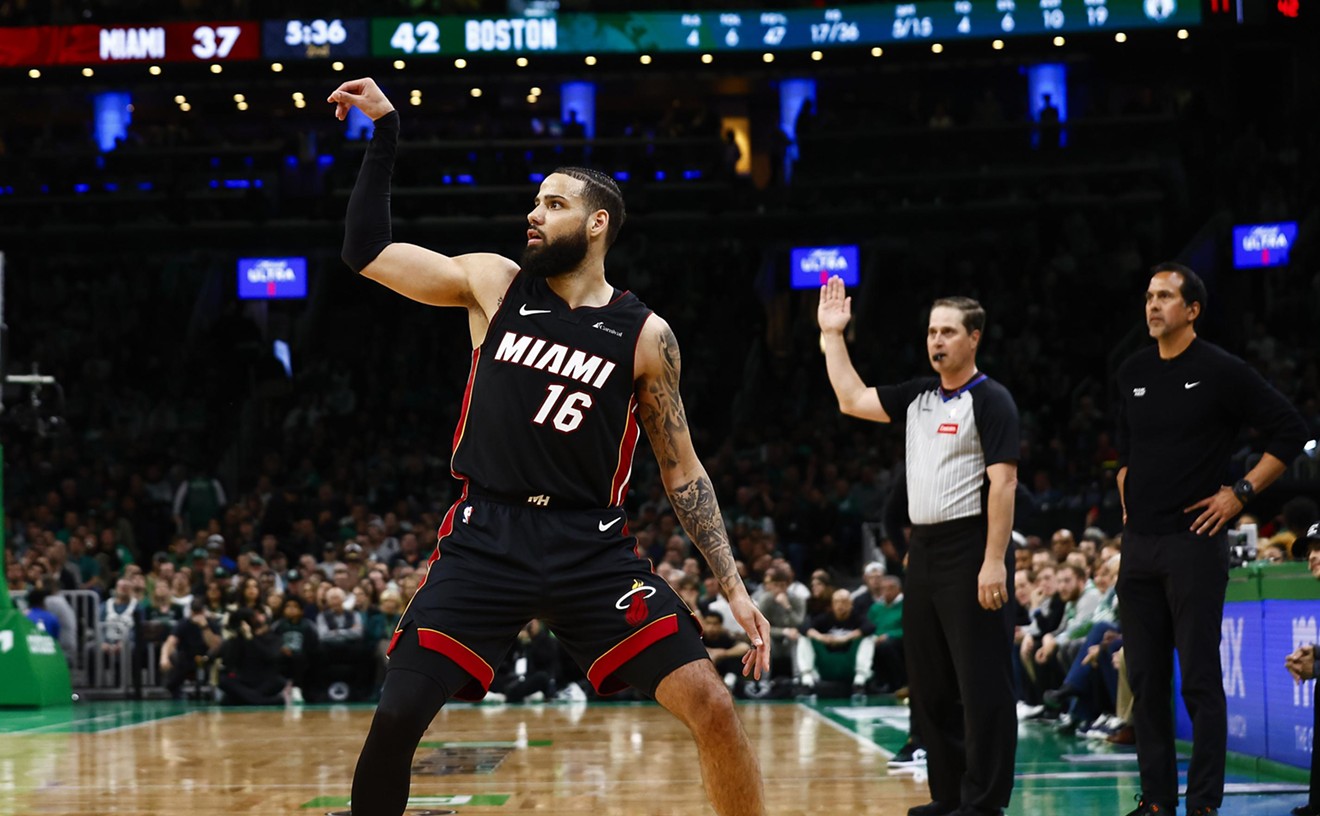Juan Mullerat argues that Calle Ocho is Miami’s most historic street, but sometime between now and the 1960s it was transformed into a three-lane highway to absorb the brunt of the city’s growing east-west commuters.
“I’m driving down it down and I don’t see anybody walking, just cars,” Mullerat tells New Times on his commute home. “I think the solution is in the back of everybody’s mind. It’s not visionary. It’s removing a highway and putting a real street where it’s supposed to go.”
Mullerat is the director of PlusUrbia, a small design firm in Coconut Grove. After the Florida Department of Transportation announced plans to redevelop roadway designs of Calle Ocho from NW 27th Avenue to NW First Avenue, his team began working. For the last few months, Mullerat and a team PlusUrbia designers tackled the “Highway Ocho” problem pro-bono, trying to return Calle Ocho to the calm, pedestrian-friendly main street it was 50 years ago. They released their proposal yesterday.
Mullerat has spoken with the Calle Ocho Merchants Association, the Little Havana Association, and the Shenandoah Association. Mullerat lives with his wife and daughters three blocks away from Calle Ocho. His colleague, Steven Wright, leaves nearby too. Mullerat stresses that their design is a sketch of all the ideas the community seems to already agree on. “The neighborhood wants a calmer, more pedestrian-friendly street. We just put it on paper,” he says.
Some time in the 1960s that 7th Street and Eighth Street became one-way and an extra lane was added to them. “Back in the '60s all cities around the country were traffic-oriented. The interest was to move as many cars as fast as they could to alleviate traffic,” Mullerat explains. “Over the years, Calle Ocho became a dangerous street for pedestrians.”
The plans include returning Calle Ocho to be a two-way, two-lane street, as it was originally. They also extend the sidewalk to comfortably fit passersby and add a bike lane and bus-only lane. Parallel parking on both sides of the street will be available, too. However, to compensate, one driving lane will be removed. “We want to try to get better streets, to walk down Calle Ocho with a stroller and be comfortable, and see bikes and trees when we walk to see its quality retail, and not just go in my car,” Mullerat says.
Mullerat also stresses that his firm has no stake in the project. Even if the FDOT accepts their proposal, they don’t receive any money. “At the end of the day, it’s an FDOT project. Our stake is literally zero,” he says. “I live three blocks away. I want my main street. Calle Ocho is the center of Miami why not support it and let the street become better. That’s our stake.”
Whether or not the FDOT accepts PlusUrbia’s proposal, Mullerat fears that FDOT won’t take the opportunity to bring real change. “There’s an effort out there to make better streets. We just want to make sure they are better. I would hate for the powers that be to just put a couple of trees and benches and call it a day,” he sighs.
Here is a before, present, and after:
Detailed sketches of the plans:
[
{
"name": "Air - MediumRectangle - Inline Content - Mobile Display Size",
"component": "19274298",
"insertPoint": "2",
"requiredCountToDisplay": "2"
},{
"name": "Editor Picks",
"component": "17482312",
"insertPoint": "4",
"requiredCountToDisplay": "1"
},{
"name": "Inline Links",
"component": "18711090",
"insertPoint": "8th",
"startingPoint": 8,
"requiredCountToDisplay": "7",
"maxInsertions": 25
},{
"name": "Air - MediumRectangle - Combo - Inline Content",
"component": "17482310",
"insertPoint": "8th",
"startingPoint": 8,
"requiredCountToDisplay": "7",
"maxInsertions": 25
},{
"name": "Inline Links",
"component": "18711090",
"insertPoint": "8th",
"startingPoint": 12,
"requiredCountToDisplay": "11",
"maxInsertions": 25
},{
"name": "Air - Leaderboard Tower - Combo - Inline Content",
"component": "17482313",
"insertPoint": "8th",
"startingPoint": 12,
"requiredCountToDisplay": "11",
"maxInsertions": 25
}
]











